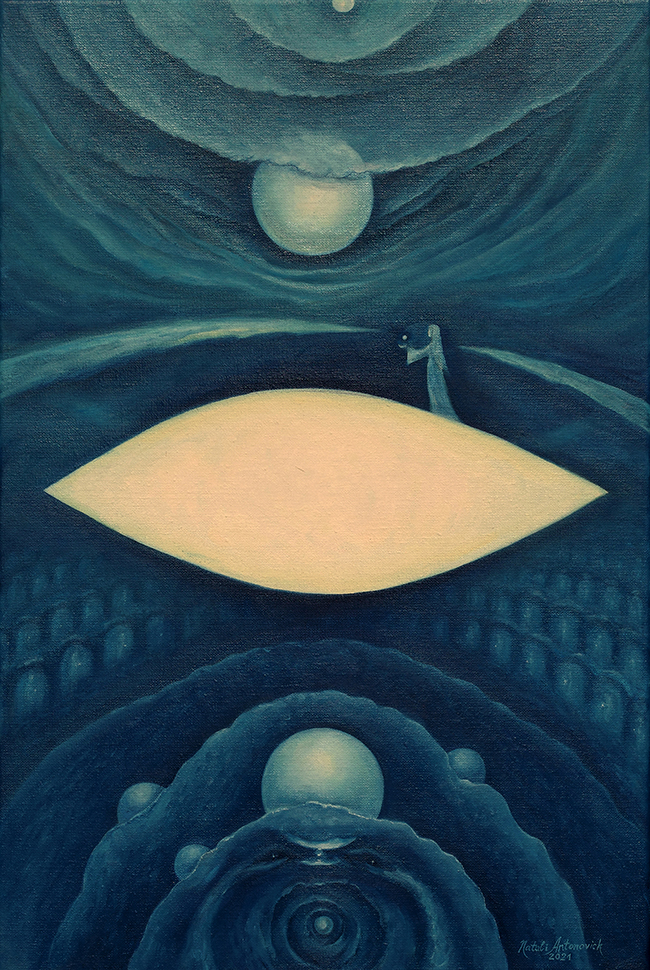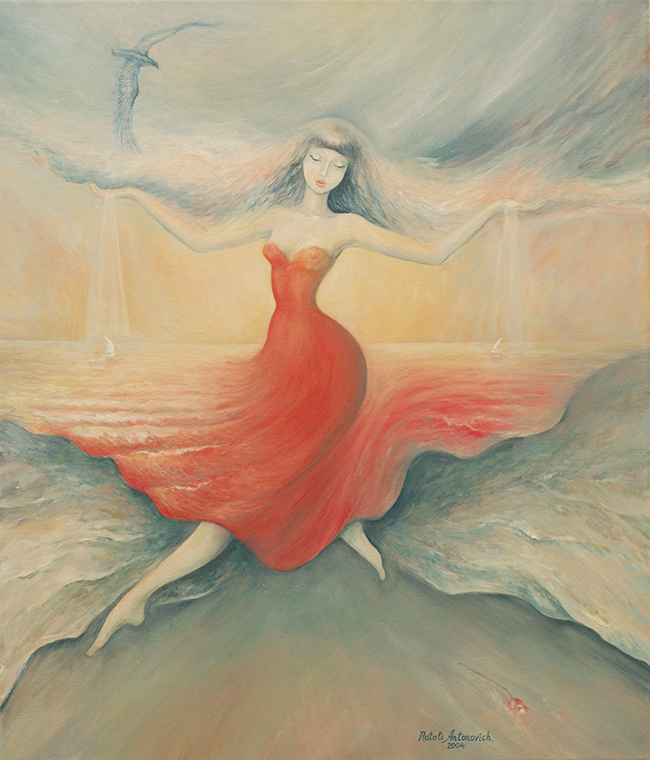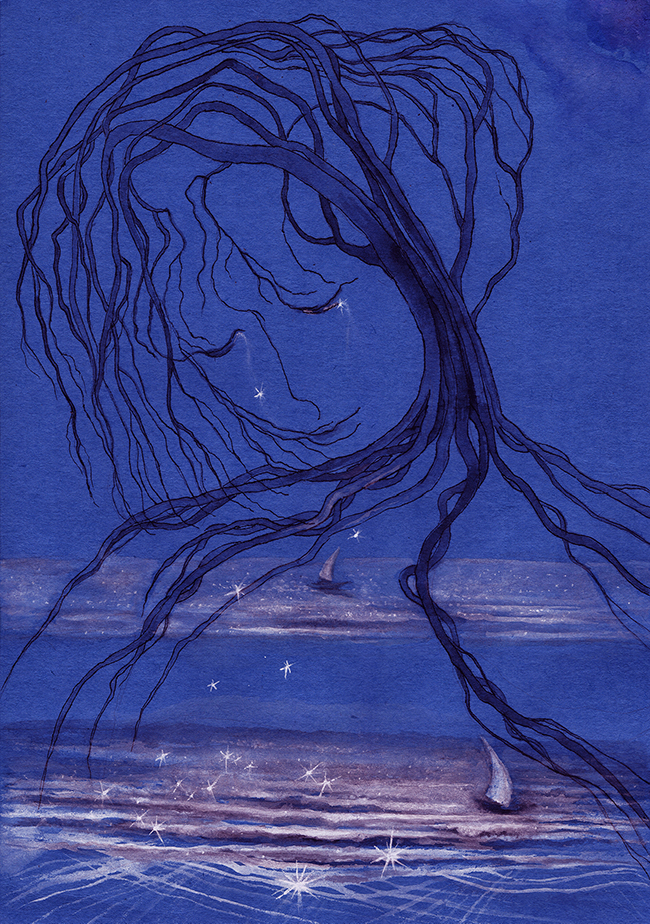Natali Antonovich didn’t arrive at painting through noise or flash. Her work isn’t about spectacle—it’s about clarity. She’s spent years developing a visual language rooted in quiet self-awareness, shaped by a lifelong habit of paying attention. Early on, she noticed the details others missed. That attentiveness stayed with her, turning into a kind of compass as she moved through different creative disciplines—graphics, portraiture, batik, teaching. All of it fed her curiosity. But it was oil painting and watercolor that gave her the space she needed. The texture, the depth, the ability to work slowly and speak softly—these mediums let her say what she means without rushing. For Antonovich, art isn’t decoration. It’s a way back to herself.
Her paintings speak in fragments. They often feel like memories, or messages heard through water. You don’t read them; you sit with them. Let’s take a look at three of them.

“…in the midst of silence” (2021)
Oil on linen canvas
From the series Eternity
This work feels less like a picture and more like a breath held. The title sets the tone—what happens when everything else quiets down? For Antonovich, the answer is light. Not sunlight exactly, but something gentler. A presence that doesn’t shout. A guide that shows rather than tells. There’s a sense of being suspended in time here, like the moment just before waking. The brushwork is deliberate but soft, allowing the viewer to get close without feeling pushed. The theme of return is present in both title and tone: “Returning to the jiffy, remember yourself.” In other words, the stillness isn’t empty. It’s a mirror.
This is characteristic of the Eternity series, where time bends and the internal takes priority. What’s important isn’t the image—it’s what it stirs up in the person looking at it.

“Solar Scales” (2004)
Oil on linen canvas
From the series Who are you?
Painted nearly two decades earlier, this piece shows Antonovich already exploring the relationship between balance and emotion. The title suggests measurement—scales—and maybe even judgment. But it’s not cold. It’s solar. There’s a dance in this painting. You can feel it in the composition: the way color moves across the surface, the way light is both a subject and a tool. This is about love—not romance, but a kind of universal warmth.
In her notes, Antonovich writes: “Only harmony elevates and helps. The Sun dances and illuminates the path for lovers.” The path she refers to might be literal or metaphorical. Either way, it’s not easy. But the painting offers reassurance: if you follow the light, you won’t lose your way. The colors lean warm, but there’s restraint. Nothing screams. Like much of her work, it’s grounded in a desire for quiet clarity, even when the subject is emotional.

“Same as lies…”
Giclée print
From the series Eternity
This one is more elusive. Even the title trails off, ending in ellipsis. That sense of incompleteness is baked into the image. It’s ghostly—figures rising, drifting, trying to help, then getting lost. There’s a tension between intention and result. You can try to do good, the painting seems to say, and still end up wandering.
But it’s not hopeless. The stars are there. Faint, yes. Quiet, yes. But steady. Antonovich describes the scene as “almost aimless loneliness and the quiet melody of the Stars.” That phrase—“quiet melody”—feels key. This work isn’t about volume. It’s about vibration. Frequency. The way small things echo when the world slows down.
Same as lies… shows Antonovich’s skill with ambiguity. She doesn’t tell you what to think. She offers a space where feelings can surface, often uninvited, and where mystery is allowed to exist without being solved.
Antonovich’s work resists the sharp edge of definition. That’s the point. She doesn’t present conclusions. She paints the conditions that make reflection possible. Whether working in oil or producing a giclée print, her concern is always the same: what happens when we pause? When we listen? When we step back from noise and look at what’s underneath?
There’s nothing trendy about her approach. It’s personal, slow, and steady. She’s not chasing novelty. She’s chasing truth, in her own way, on her own terms.
And maybe that’s what gives her work its weight—not its size or detail, but the sense that each piece is the result of deep looking, quiet honesty, and a willingness to ask questions without rushing to answer.

